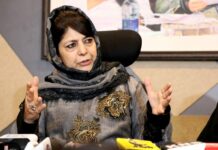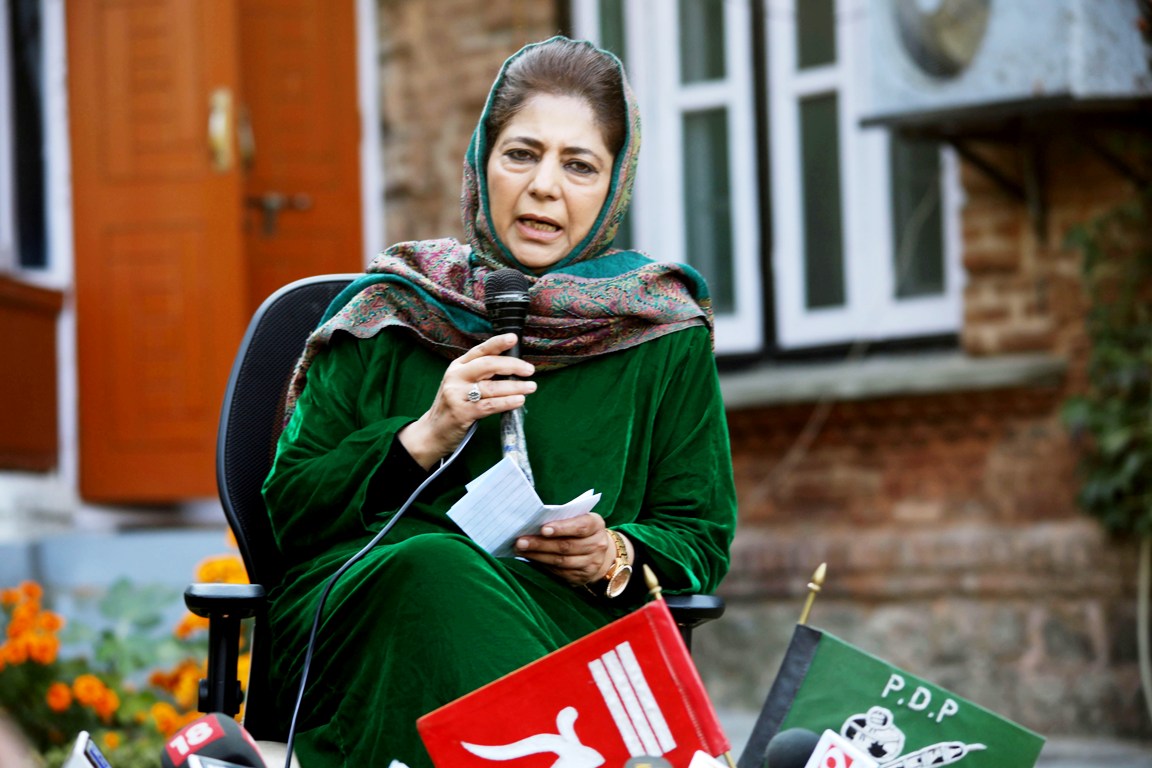by Umar Sofi
Srinagar
When Konkani singer with ancestral roots in South India’s Mangalore, Archana Kamath Hegdekar, 29, sang traditional Kashmiri song Harmukh Bartal, it instantly became a hit.

“We may leave our past, but it never really leaves us. I am a Saraswati Brahmin and so are Kashmiri Pandits. May be that’s what is keeping my heart in Kashmir even though, my physical being is away,” said Hegdekar.
Hegdekar, who works as a music teacher in Shankar Mahadevan Music Academy, Mumbai, visited Kashmir with her family despite everyone warning against doing so. “It was a risk worth taking as I have experienced best hospitality in Kashmir,” said Hegdekar with a smile. “It was entirely a different place than what has been projected by the media.”
Hegdekar, who does not understand the Kashmiri language, has recorded covers of several traditional Kashmiri songs.
Her first cover song, Harmukh Bartal,” attracted more than three lakh views in just a few days.
Recalling her stay in Kashmir, Hegdekar said, “Barring one instance when some clashes were happening in Srinagar, most of the time it was safe to be in Kashmir.”
She recalls how her tour manager helped them reach their hotel safely. “This humane gesture by our manager left me warmed,” says Hegdekar.
Hegdekar, whose Bollywood Diva song attracted around 9 million views on YouTube, feels one just need to understand the meaning of the lyrics to sing a song.
“But Kashmiri language particularly, Kashmiri songs are so beautiful that one can hear them on loop even if you don’t know the meaning,” feels Hegdekar.
Once back in Mumbai, Hegdekar liked few facebook pages promoting Kashmiri music. She also started to follow local artists and watch videos of young Kashmiris who were trying to redefine the old traditional ballads.
“I just gave Harmukh a phonetic try in my home and sought some local Kashmiris to help me with the pronunciations. To my amazement, after I shared the song on my personal handle, it was also uploaded by a Facebook page named Koshur Music. That is where the song went viral,” said Hegdekar. “Soon my inbox was flooded with the praises and messages from Kashmiris. In a concrete jungle of Mumbai, I hardly had any friends. But today, most of my pals are from Kashmir. Some help me with the pronunciations, and some teaching me this beautiful Kashmiri language.”
The first music lesson Hegdekar got was from her famous granddaughter Narasimha Kamath, who she thinks might have been of Kashmiri descent as he had Saraswati Brahmin roots. “So it was natural for me to get influenced by music,” said Hegdekar.
Hegdekar did her first Kashmiri original with Mumbai based Kashmiri musician and singer, Kabul Bukhari. The song titled ‘walo nigaar walo’ got one lakh views within no time. In the video, Hegdekar is seen wearing a traditional Kashmiri Pheran.
Hegdekar is also an active contributing member at a Konkani-Saraswat music blog, ‘Radio Idli’ since 2007.
“I am planning to record more Kashmiri songs and would love to work alongside talented musicians of the valley,” said Hegdekar.
A few months back, Hegdekar was invited to perform at an event organised by the Kashmiri Pandit community in Mumbai.

“After attending the event, I realized that there is a pain in Kashmir from every side. No one is a winner in this conflict. Everyone is a victim,” feels Hegdekar, who has done her post graduation in Counseling Psychology and a Certificate in Basic Hypnotherapy.
Hegdekar believes that music can heal the pain if sung on the subjects of love. It will surely do what is needed in Kashmir right now, a healing touch. “I hope that is the least, I can do. Try to get inside the hearts of Kashmir not to impress them but to give a curative touch through music only,” said Hegdekar. “I think music is the only thing that can traverse the borders of land, religion and even pain.”
















so she is saying kashmiris were actually saraswat brahmins…. It means that they are indic..but why ot is claimed that they belong to dardic branch of indo aryan people… i myself have visited gilgit and many other areas where dardic people are present especially shina people of gilgit baltistan amd i have seen they have very much common with kashmiris… kashmiris look same as that of their dardic counterparts and about language it is very much same…. if not same but i would say closest… but how come kashmiris become indic brahmins and not dardic